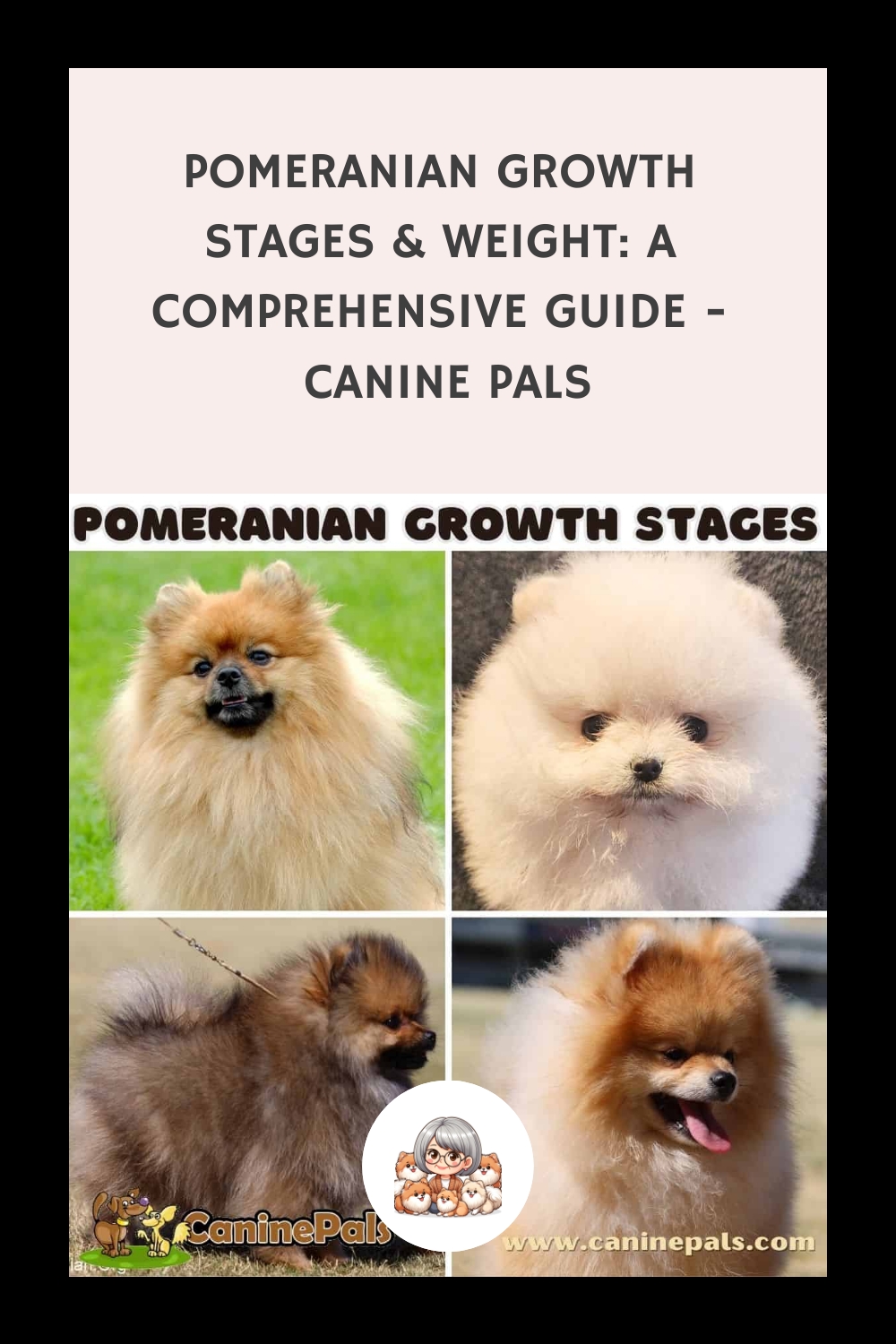Last Updated on March 21, 2024 by Denise Leo. Post first published on July 4, 2023.
Keeping your furry friend healthy and happy during the various stages of life can be difficult. This guide on Pomeranian growth stages will help you best care for your pup.
The Pomeranian is one of the world’s most popular toy dog breeds. It is known for its cute and fluffy appearance, and its small size makes it perfect for apartment living.
If you are a new owner of a Pomeranian puppy, you may be wondering about their growth stages. Understanding the different stages of Pomeranian growth is important to ensure your puppy is healthy and properly developing.
From birth to adulthood, Pomeranians experience several growth spurts. Understanding these developmental stages is important because they can affect your puppy’s health and behavior.
During the neonatal period, which lasts from birth to two weeks, your Pomeranian will be tiny, fragile, and completely dependent on its mother. After that, your puppy will go through several other stages, including the transitional, socialization, and adolescent periods.
Each stage has its unique characteristics and challenges, and it’s important to know what to expect so that you can provide the best care for your puppy.
Key Takeaways
- Pomeranians go through several growth stages from birth to adulthood.
- Understanding these stages is important for your puppy’s health and behavior.
- Each stage has unique characteristics and challenges, and it’s important to know what to expect so that you can provide the best care for your puppy.
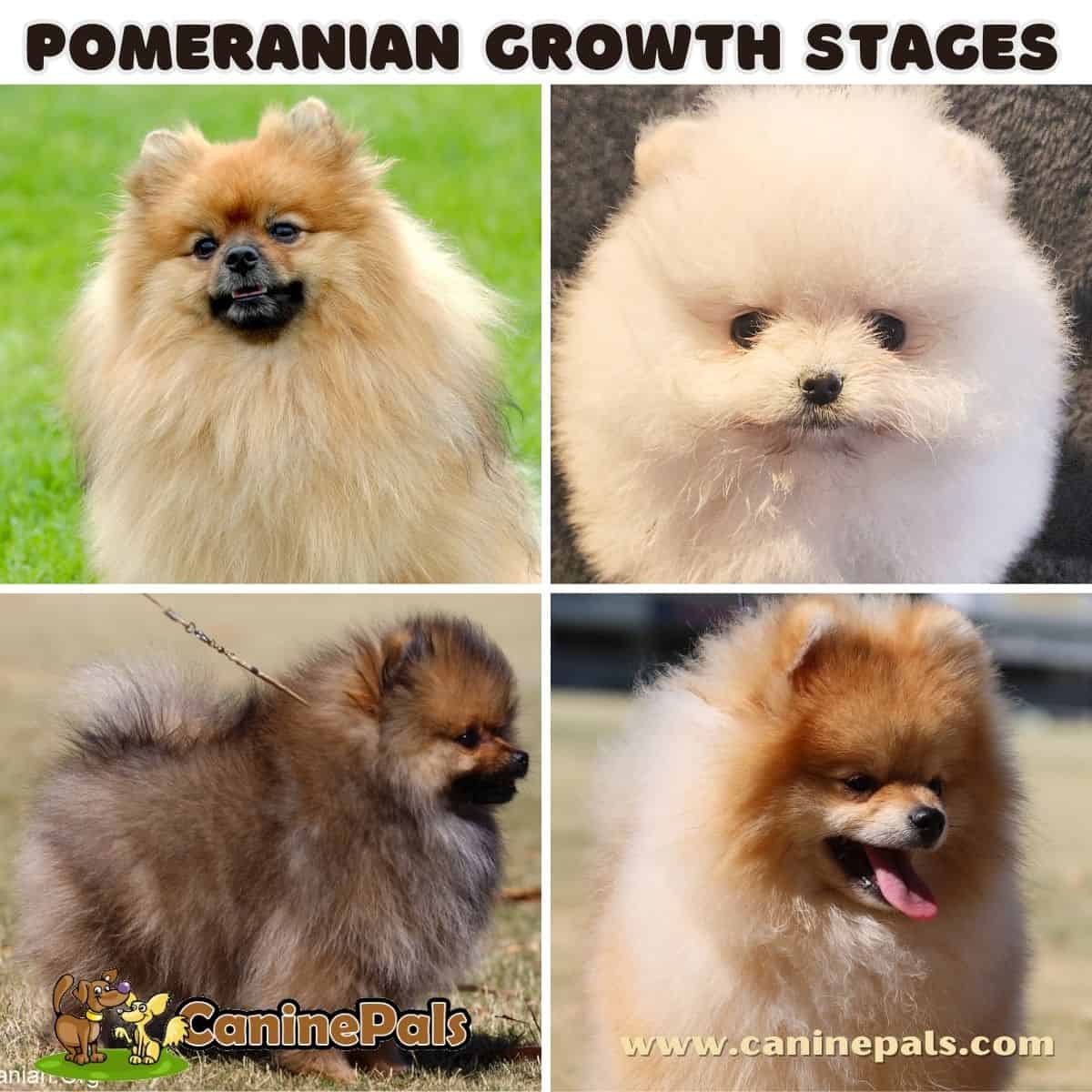
Pomeranian Puppy Stages
As a Pomeranian breeder and owner with many decades of experience, I have experienced the joy of watching my puppies grow and develop into fully-grown adult Pomeranians. Pomeranian puppies are born weighing just a few ounces and are incredibly small and fragile. During their first few weeks of life, they rely entirely on their mother for nutrition and warmth.
The neonatal period lasts from birth until around three weeks of age, during which time the puppy’s body temperature must be kept warm and stable. As puppies move into their transitional period, which lasts from three to seven weeks, they interact more with their environment and start eating solid food.
This period is critical for socialization and interaction with other dogs and humans. The puppyhood stage lasts seven to twelve weeks, during which the Pomeranian puppy grows rapidly and experiences rapid weight gain.
It’s essential to monitor their growth rate and ensure they don’t become overweight, which can lead to health problems later in life. At five to 6 months, Pomeranian puppies move into adolescence.
They become more independent, often look all legs, and start dropping their puppy coat and developing their adult coats. The adolescent stage lasts until eight months.
Pom puppies have reached their full adult size by forty-two weeks, and their growth rate has slowed significantly. It’s important to note that every dog grows at a different pace, so monitoring their growth using a Pomeranian growth chart is essential.
As Pomeranians mature, they develop a gorgeous thick coat after dropping their puppy coat. Maintaining their fur and grooming them regularly is important to prevent matting and tangling.
Pomeranian growth stages are natural and follow a predictable pattern. Pomeranian puppies can develop into healthy and happy adults by monitoring their growth rate and providing a healthy environment and diet.
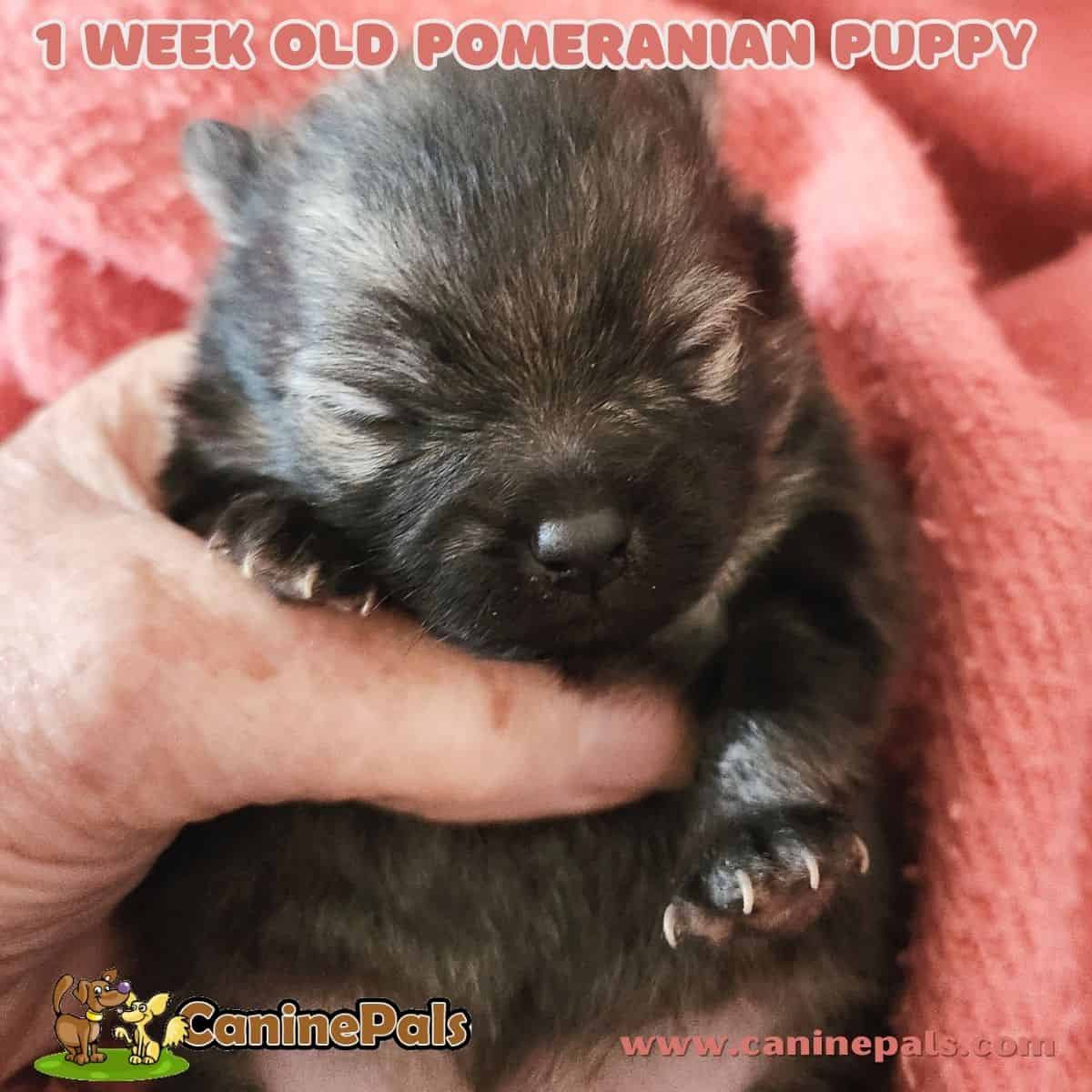
The Seven Pomeranian Growth Stages and Their Timelines
- Stage One: The first 0 – 3 Weeks.
- Stage Two: The critical 3 – 7 Weeks.
- Stage Three: The formative 7 – 12 Weeks.
- Stage Four: The transformative 12 – 17 Weeks.
- Stage Five: The evolving 17 – 40 Weeks.
- Stage Six: The maturing 40 – 52 Weeks.
- Stage Seven: Thriving at one year and beyond.

Stages of Pomeranian Growth
As a Pomeranian puppy grows, it goes through several stages of development. In this section, I will explain the steps of Pomeranian growth and what you can expect during each phase.
Newborn Pomeranian Puppy
When a puppy is born, it is born with closed ears and eyes. Its senses of taste, touch, and smell are only partially functional. However, it can still respond to discomfort, pain, and small disturbances by crying or whining to alert you.
A newborn puppy has a lower body temperature than an adult dog and cannot tolerate cool weather. Keeping the room warm (around 80 degrees) ensures optimal development. Breeders achieve this by using heating pads or heat lamps.
Newborn puppies rely on their mother to stimulate the process of defecation and urination, as they cannot do it themselves.
The primary goals of a newborn puppy are to find food and warmth. Although they do not have teeth yet, their nails have fully grown and may need to be trimmed during the first week of birth.
The main activities of newborn puppies are to seek nourishment from their mother and sleep as much as possible.
Newborn puppies typically sleep, occasionally twitching or moving slightly to adjust their position. These twitches occur because they primarily experience REM sleep, characterized by brain activity.
3 to 6 Weeks Puppy Growth
Get ready for some adorable puppy adventures! At three weeks old, puppies start to explore their surroundings, even if they’re a little clumsy. It’s like their crawling stage, just like human infants. They progress quickly, though. By 3 ½ weeks, most puppies can move around independently and are stable on their feet.
Their hearing and sight improve daily, and they can start drinking liquids and eating mushy solid foods. They interact with their littermates by deciding who will be the cuddle buddy during nap time. They don’t mind either role. This is also when they begin to socialize and crawl, trying to stand up and walk.
By four weeks, they’re pros at “real” puppy food and eat more of it, reducing their nursing. However, they’re not fully weaned yet. Pomeranian pups are more active at this stage, exploring and socializing with the world. They should be exposed to sounds like vacuum cleaners and music and walk on textured surfaces.
They’re learning to control their body temperature, growing their puppy coat, and going potty without needing stimulation from their mother. She’ll still clean up after them for a little longer. By five weeks, they’re considered toddlers and spend more time with humans, their mothers, and littermates. They’ll start to play with toys but have yet to be in a vigorous way.
They’ll have their first shots at six weeks and should have had several wormings. Playtime ramps up, and toys become fascinating. Breeders should provide a variety of stimuli and environments for the puppies to explore safely. The mother continues to teach manners, especially “bite suppression.”
Over the next two weeks, puppies will learn proper canine behavior and become completely weaned before going to their permanent homes. Smaller breeds like Pomeranians might need extra time with their litter and mother. At six weeks, puppies are outgoing, friendly, curious, and eager to learn. With proper socialization, they’ll be ready to please their new owners when it comes.

8 Week Old Pomeranian Puppy
At eight weeks old, Pomeranian puppies are ready to leave their mother and go to their new homes. They should be weaned from their mother’s milk and eat solid food. At this age, puppies should be vaccinated and wormed.
3 Month Old Pomeranian
Pomeranian puppies grow quickly at three months old and should have all their baby teeth. They should be eating a balanced diet and learning basic obedience commands. Potty training and socialization should also be a priority at this stage.
4 Month Old Pomeranian
At four months old, Pomeranian puppies are still growing and developing. They should have all their baby teeth and be transitioning to adult food. Potty training and socialization should continue, and basic training should be reinforced.
5 Month Old Pomeranian
At five months old, Pomeranian puppies may go through a phase called “puppy uglies,” where they shed their baby coat and grow their adult double coat. They should be eating a balanced diet and continuing with potty training and socialization.
6 Month Old Pomeranian
Pomeranian puppies enter adolescence at five to six months and may start chewing and exhibiting other unwanted behaviors. Training and socialization should continue, and be vaccinated and wormed as needed.
1 Year Old Pomeranian
Pomeranian puppies are considered adults at one year old and should have reached their full size. They should be eating a balanced diet and getting plenty of exercise. Training and socialization should also continue to ensure they have a well-rounded personality and are obedient.
Understanding the stages of Pomeranian growth is crucial for providing the best care for your puppy. Knowing what to expect during each stage can help your Pomeranian grow into a healthy and happy adult.
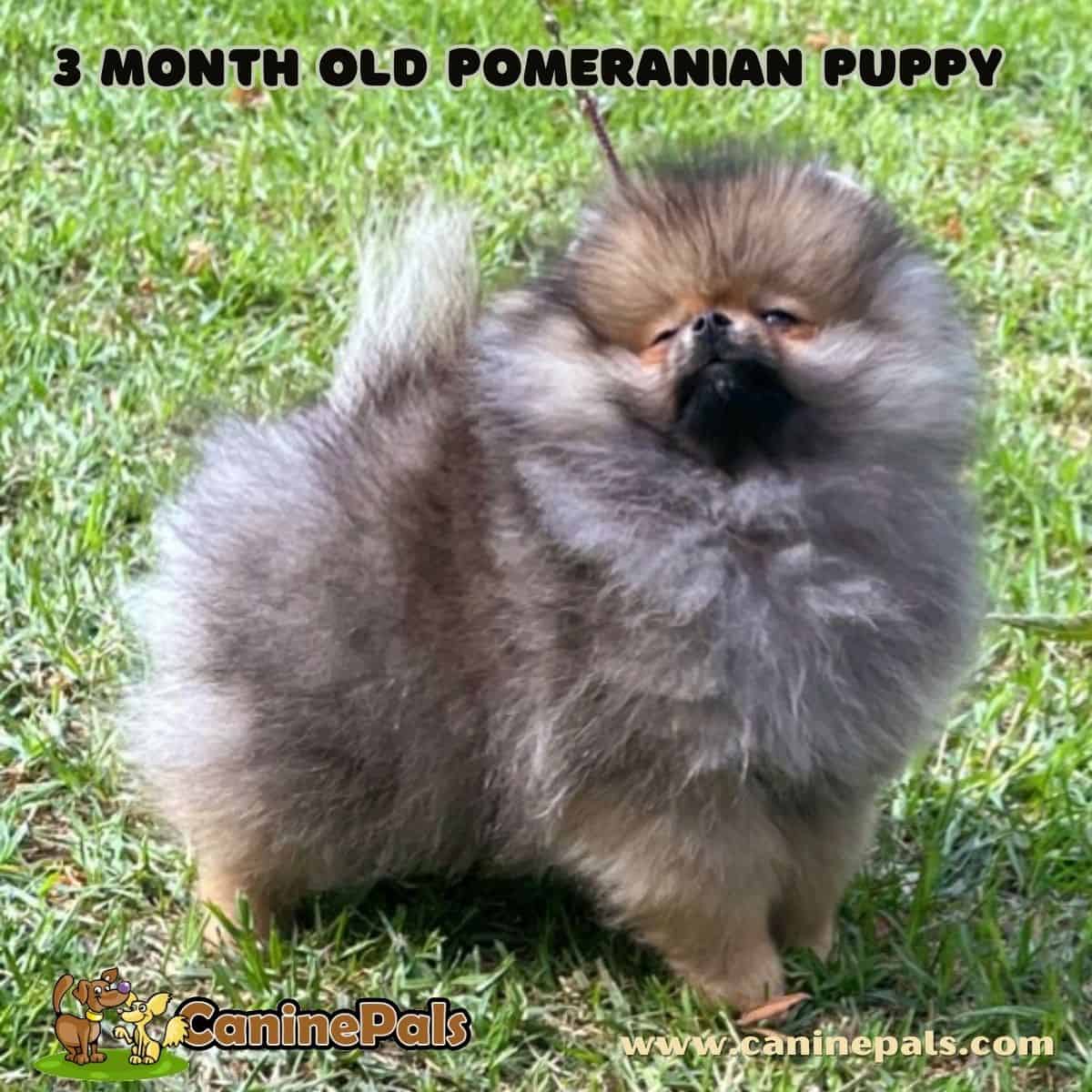
Pomeranian Puppy Weight Chart: Predict Your Pom’s Full Size!
Are you curious about how big your Pomeranian puppy will get? Our Pomeranian weight chart has all the answers. Whether you know their birth weight, you can still use this chart to estimate your puppy’s eventual size. Just look at their current weight and age group.
Remember, every puppy grows at their own pace, so don’t stress if your Pom doesn’t match up exactly. The most important thing is that they’re healthy. If you have any concerns, consult your vet for guidance.
|
Weight at Birth |
3 oz |
3.5 oz |
4 oz |
4.5 oz |
5 oz |
5.5 oz |
6 oz |
6.5 oz |
|
1 week |
5 |
5 |
6 |
8 |
9 |
10 |
10 |
11 |
|
2 weeks |
6 |
7 |
9 |
10 |
12 |
13 |
14 |
16 |
|
3 weeks |
8 |
9 |
11 |
14 |
16 |
17 |
18 |
20 |
|
4 weeks |
9 |
11 |
13 |
17 |
19 |
21 |
23 |
24 |
|
5 weeks |
11 |
13 |
15 |
19 |
22 |
24 |
26 |
29 |
|
6 weeks |
12 |
15 |
17 |
22 |
24 |
27 |
30 |
32 |
|
7 weeks |
15 |
17 |
19 |
24 |
27 |
30 |
33 |
35 |
|
8 weeks |
16 |
19 |
21 |
27 |
29 |
33 |
36 |
39 |
|
9 weeks |
17 |
20 |
23 |
29 |
32 |
35 |
39 |
42 |
|
10 weeks |
19 |
22 |
25 |
31 |
34 |
38 |
41 |
44 |
|
11 weeks |
21 |
24 |
27 |
34 |
37 |
40 |
45 |
49 |
|
12 weeks |
22 |
26 |
30 |
37 |
41 |
45 |
48 |
52 |
|
13 weeks |
24 |
28 |
32 |
40 |
44 |
48 |
51 |
57 |
|
14 weeks |
26 |
30 |
34 |
43 |
47 |
49 |
55 |
60 |
|
15 weeks |
28 |
32 |
37 |
46 |
51 |
56 |
61 |
65 |
|
16 weeks |
30 |
34 |
39 |
49 |
54 |
59 |
65 |
70 |
|
17 weeks |
31 |
36 |
41 |
51 |
57 |
62 |
67 |
72 |
|
18 weeks |
33 |
37 |
43 |
54 |
60 |
64 |
71 |
75 |
|
19 weeks |
34 |
39 |
44 |
56 |
62 |
67 |
72 |
77 |
|
20 weeks |
35 |
41 |
46 |
58 |
64 |
70 |
76 |
81 |
|
21 weeks |
36 |
42 |
48 |
60 |
66 |
72 |
78 |
84 |
|
22 weeks |
37 |
43 |
49 |
62 |
68 |
74 |
80 |
86 |
|
23 weeks |
38 |
44 |
50 |
64 |
70 |
76 |
82 |
88 |
|
24 weeks |
39 |
45 |
51 |
65 |
71 |
78 |
84 |
90 |
|
Adult weight |
3 lbs |
3.5 lbs |
4 lbs |
5 lbs |
5.5 lbs |
6 lbs |
6.5 lbs |
7 lbs |
Unlike other dog breeds, male and female Poms have no noticeable size difference. So, how can you predict your puppy’s full size? Our Pomeranian growth chart!
This handy tool calculates their growth based on weekly increments since birth. Don’t know their birth weight? No problem! Our growth chart is still useful, although the results may need more precise.
Remember, every pup grows at its own pace, so don’t stress if your Pom is slightly ahead or behind the estimates. The most important thing is that your Pomeranian is healthy. If you have any questions, consult your trusted veterinarian.
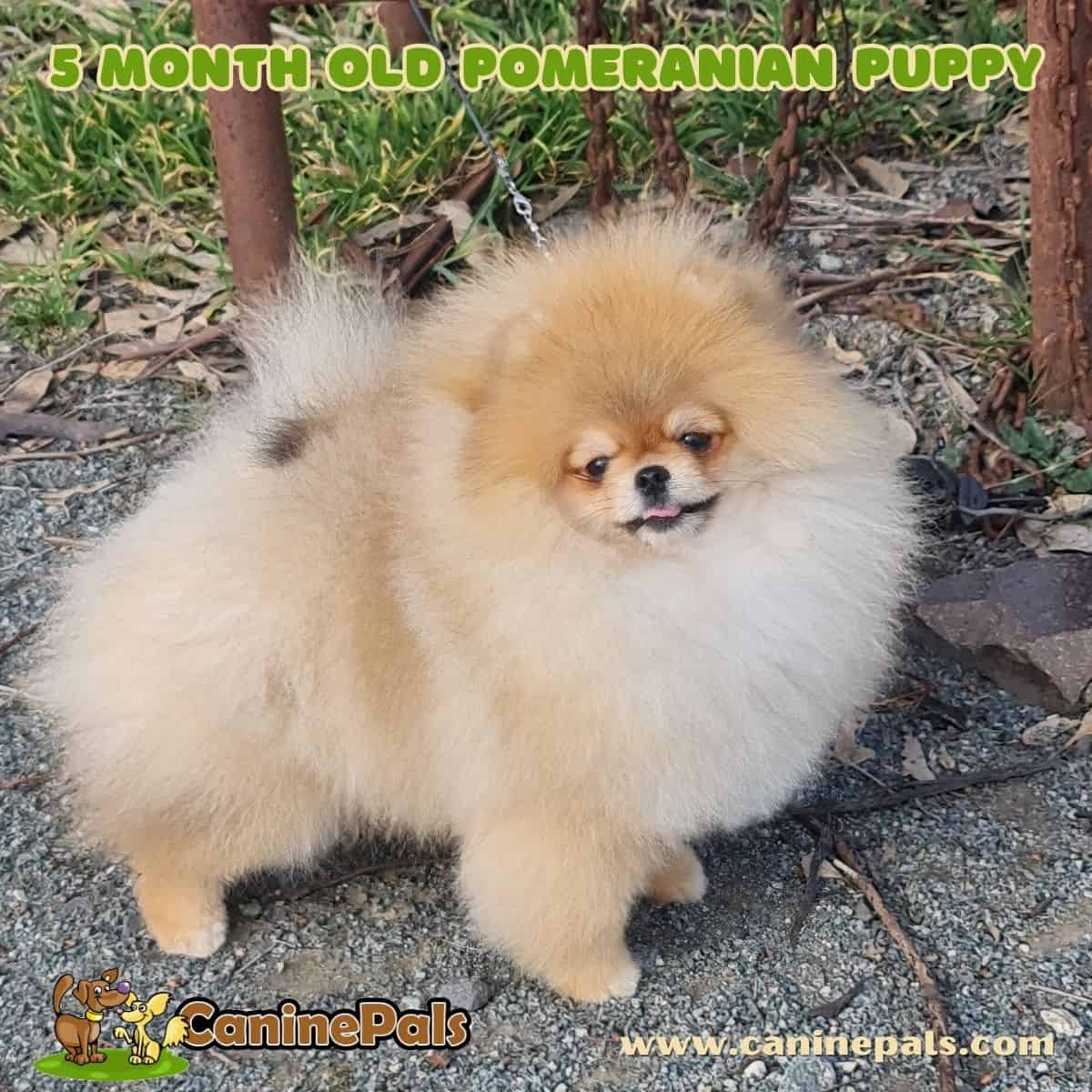
Frequently Asked Questions
What is the typical size of a 3-month-old Pomeranian?
At three months old, a Pomeranian typically weighs between 2 and 3 pounds and stands about 6 to 7 inches tall.
How can I calculate the age of my Pomeranian?
To calculate your Pomeranian’s age, multiply its age in months by 0.33. For example, if your Pomeranian is 12 months old, its human age would be approximately four years.
What is the average weight of a 4-month-old Pomeranian?
A Pomeranian typically weighs between 3 and 3.5 pounds at four months old.
How do Pomeranian growth stages compare to human years?
Pomeranian growth stages can be compared to human years by multiplying their age in months by 0.33. For example, a 6-month-old Pomeranian would be approximately two years old in human years.
What are the normal stages of Pomeranian development?
The normal stages of Pomeranian development include the neonatal period (birth to 2 weeks), transitional period (2 to 4 weeks), socialization period (4 to 12 weeks), juvenile period (3 to 6 months), adolescence (6 months to 2 years), adulthood (2 to 8 years), and senior years (8 years and up).
When do Pomeranians typically go through the ‘puppy uglies’ and get fluffy?
Pomeranians typically go through the ‘puppy uglies’ between 4 and 8 months. Their puppy coat sheds during this time, and their adult coat grows in. By age one year old, they should have their full adult coat.
At what age is a Pomeranian fully grown?
Pomeranians reach their full size by the age of one. While most of their growth happens by six or seven months, some Poms may continue to mature even after their first birthday. Smaller Pomeranians may take up to 18 months to fully develop and reach their adult size.
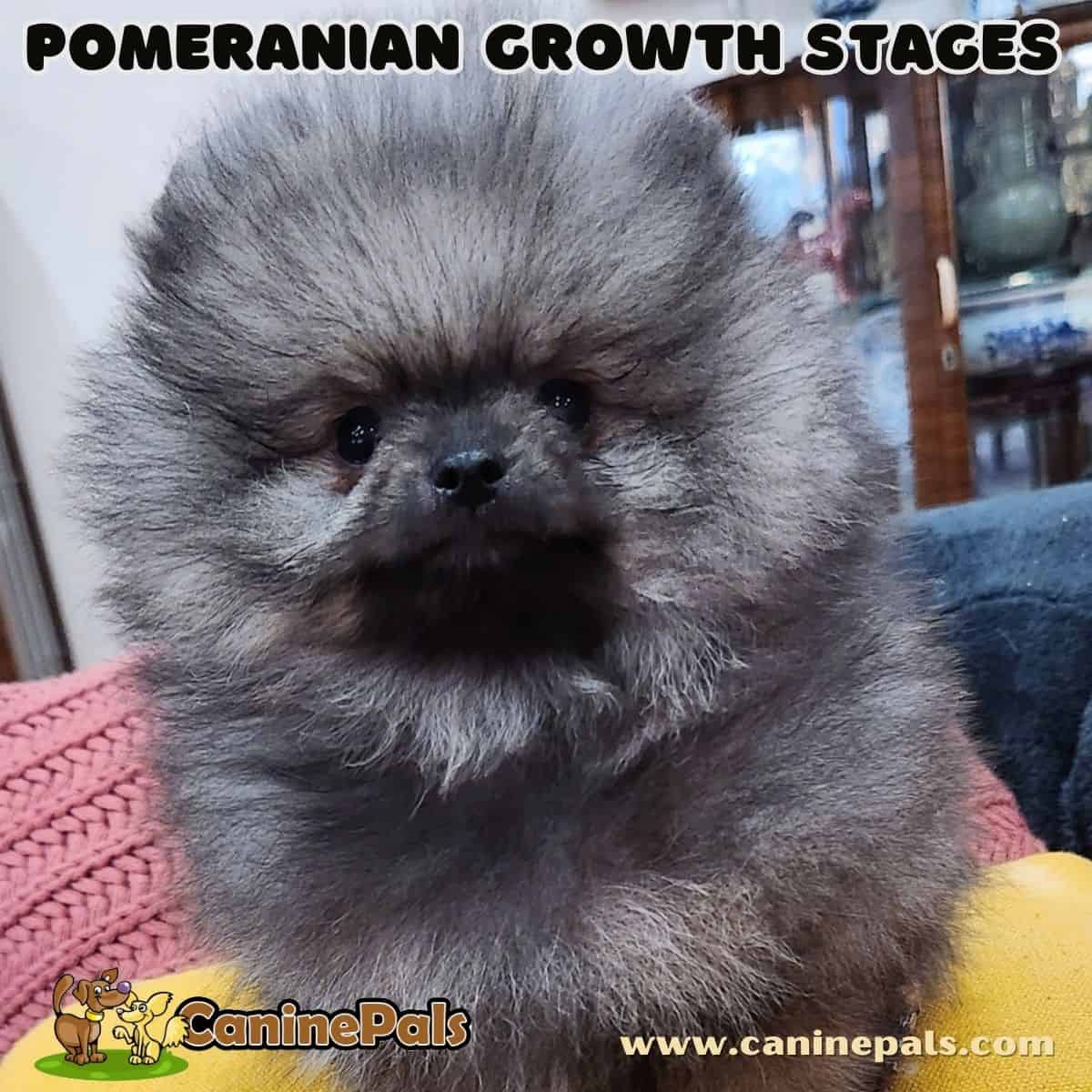
Final Thoughts: Pomeranian Growth Stages
In conclusion, understanding the Pomeranian growth stages is crucial for pet parents who aim to support their furry companion through each development stage. As these small dogs transition from playful puppies to adults with an active lifestyle, Pomeranian owners must adapt their care and attention to meet their pet’s changing needs. By recognizing and accommodating each growth phase, pet parents can ensure their Pomeranian thrives, enjoying a healthy, happy life as a beloved family member.
Understanding the Pomeranian growth stages and what to expect can help you provide your pup with the best care. Each step of a Pom’s life brings a variety of new experiences, challenges, and opportunities for learning―making them an incredibly rewarding pet to own. And don’t forget that there is still plenty of time to bond with, train, and give your pup lots of love during each step.
These vital tips will help ensure your Pom puppy is healthy and happy throughout their development. From puppyhood to adulthood, regular checkups with a vet should be one of your top priorities to maintain your pup’s well-being and keep them close for years to come!
Copyright CaninePals.Com. All Rights Reserved.
References and Further Reading:
-
-
-
- Official Standard of the Pomeranian (AKC). American Kennel Club, 2011.
- Official English Kennel Club Pomeranian Breed Standard, 2017.
- Kimbering Pomeranians “1891-1991”.
- Denise Leo, The Pomeranian Handbook.
- L.Ives, Show Pomeranians.
- L.Ziegler Spirer & H.F. Spirer, This is the Pomeranian.
- FEDERATION CYNOLOGIQUE INTERNATIONALE (FCI) German Spitz, including Keeshond and Pomeranian Breed Standards. PDF file.
-
-
The Pomeranian Handbook by Denise Leo
